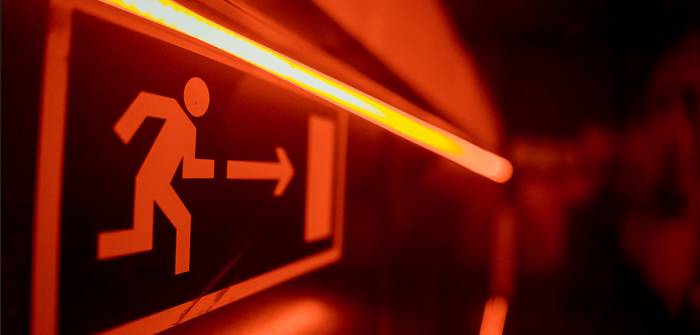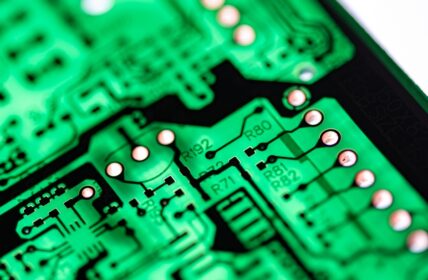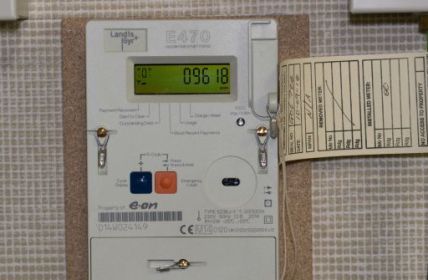Four years ago a company in Finland developed and launched a new concept. The IoT-based system is used in various industries and also fulfills vital tasks. Specialists in advanced building systems like ENSTO or Haltian even use it for escape route lighting.
Table of Contents: What awaits you in this article
Escape Route Lighting and IoT: Definition
IoT is a collective term. “Internet of Things” refers to technologies that connect physical and virtual objects in a network. This enables different components to work together with a wide range of possible applications.
Escape Route Lighting: Definition
Escape route lighting as a subgroup of emergency lighting is used for orientation in the event of a failure of the regular lighting. Escape signs and escape route lights enable safe exit from a building.
Status Quo: Automated BUS systems
Although advances in technology are taking off in many sectors, operators continue to rely on BUS systems for escape route lighting. The individual components are connected via cable routes. When data is transmitted, different sensors and other components must share the same signal transmission path. Since it is not possible to seize the line at the same time, information can only be called up one after the other. Conventional BUS systems check the function of the lighting components by sending an interference pulse. Damaged components can be identified in this way.
The size of BUS systems is tied to the maximum cable length and maximum number of components. The choice of a system therefore depends on the size of the company premises. The differences in transmission speed, the type of cabling and possibly the amount of cable to be laid are also decisive factors.
The KNX and Dali system have become established in recent years.
IoT in escape route lighting
IoT’s advancement into new industries can be traced back to Wirepas. True to their name, they reduce the need to lay cables. Instead, they rely on Bluetooth to network the components of their systems. The Wirepas Massive IoT running on 5G connects a virtual interface with sensors that can be attached to lighting elements.
A signal is sent through the entire network (= IoT Mesh) every minute. As a result, malfunctions are noticed almost immediately. The data is processed at the interface and visualized using a program. This makes it easy to find the place where problems with the components of the escape route lighting occur. This facilitates and speeds up maintenance work.
The IoT Mesh is limited to a building system and can only be viewed by the customer. Since the sensors pass on the Bluetooth signal as repeaters, the building system can be expanded as required. This is made easier by the simple installation, which can also be carried out by non-specialists.
Regulations on attaching, documenting and checking procedures
The escape and rescue plan
The purpose of escape route lighting is to enable people to leave a building in an emergency. As such, not only the lighting technology is regulated, but also signage. The escape and rescue plan must be posted in a clearly visible place to serve as a guide for rescuers and those in need of help. The backlighting and lighting of escape sign luminaires is regulated by DIN 4844. Backlighting must achieve at least 500 cd/m2 luminance. Compared to the general escape route lighting, the signs must be illuminated more intensely.
Lighting technology standards
The lighting is standardized by DIN EN 1838, which refers to aisles two meters wide. In wide corridors, the number of lights must be adjusted. The path is considered in two-meter sections, with each individual section corresponding to the specifications of the standard. The number is always rounded up.
The escape route lighting after a power failure must come on within 15 seconds and provide full light output. This is at least one lux on the central axis of a corridor with horizontal lighting. According to DIN EN 1838 and ASR A3.4/3, the measuring height of 20 cm and the illuminance are also regulated. This is due to the vision of the human eye. The luminosity must not be too strong so as not to dazzle anyone in the general darkness. The color rendering index is also adapted to people with at least Ra 40.
Independent power source
All systems associated with emergency lighting shall be powered from an independent power source. Depending on emergency situations, the general power supply may also be affected. In order for the emergency lighting to work at precisely such moments, there must be an alternative power source for it.
Unlike other groups of emergency lighting, the choice of independent power source is more limited. Units with internal combustion engines are no longer possible sources of electricity. This is due to their fixed switching time of 15 seconds. However, since the emergency lighting must be fully operational within 15 seconds, combustion engines are too slow.
As a power source that is independent of the general circuit, only batteries can be considered:
- Individual batteries
- Group batteries/ Low Power Supply System (LPS)
- Central Batteries/ Central Power Supply System (CPS)
Each type of battery is bound to different installation guidelines. The CPS has its own operating room. In addition to the central battery, only one charging switchgear may be located in it. This rule has been abolished for the LPS.
In general, it is important to observe fire protection measures when laying cables and lines. If they pass through firewalls or other fire-resistant building structures, standardization rules apply again (ÖNORM DIN 4102-12).
As a rule of thumb when laying cables and lines, the following three requirements should be considered:
- on raw ceilings under the floor screed with at least 30 mm coverage in the ground
- in a bed of sand with a cover
- in the ground
Documentation
The operator or owner of a site must document the condition of the escape route. A test book should be kept for every lighting system. This is legally significant.
If it is requested by authorized parties, then the following data must be easily accessible:
- Date of commissioning and certificates of changes
- Date and brief information about all maintenance, inspections and tests
- Date and brief information about all errors and how to fix them
- Date and Information about innovations and changes to the emergency lighting system
- If an automatic test device is used, the main features and mode of operation of this device must be described
Automatic check: BUS
The established BUS systems have also developed further in recent decades. Some, like the newer DALI (Digital Addressable Lighting Interface) systems, may include automatic verification options. The customer is offered two options. On the one hand, the test can be started manually in a program at any time. The other option is to pre-program the test launch on set dates. As a rule, the data is recorded and made accessible via a program from the manufacturer. These are now also available on apps.
Automatic check: IoT
Compared to the testing system of the BUS systems, Wirepas’ IoT system is designed significantly differently. Instead of relying on precise test dates and manual tests, it lives on a completely different premise: the minute feedback is much more of a continuous or continuous test. As a result, the system readiness is always up to date understandable and damage is noticed almost immediately.
The latter is possible with another function that separates the IoT system from the BUS system. In the event of damage, the person responsible for escape route lighting can be notified directly on the cell phone. You can choose between a push notification from an app or a call. In general, Wirepas offers a variety of customization and customization options in its programs. These also go beyond continuous testing.
Escape route lighting in transition
Progress calls for change. Long-established things can only be changed for so long. Many industries have had to face this uncomfortable truth. The carriage gave way to the car, the telegram to the telephone, the record player to the CD cassette. BUS systems have been on the market for a long time. In an age of wiring, they are the most successful system. But the idea of wireless is not new.
A wireless telegram system existed as early as 1896. In 1971, ALOHAnet was the first wireless computer network to be created. Less than twenty years later, the creator of Bluetooth is nominated for the European Inventor Award. WLAN has been affordable since 1999 and has made its way into every house. That is 18 years after his birth. Looking at human history and the use of technology, it is only evident that the new Bluetooth will continue to prevail. It’s now in almost every mobile device.
BUS systems are known. But IoT means progress. And in the nature of the IoT system, as Wirepas uses it, escape route lighting also means more security. Perhaps the BUS systems can be further modified to keep up with progress. But this remains to be seen.






